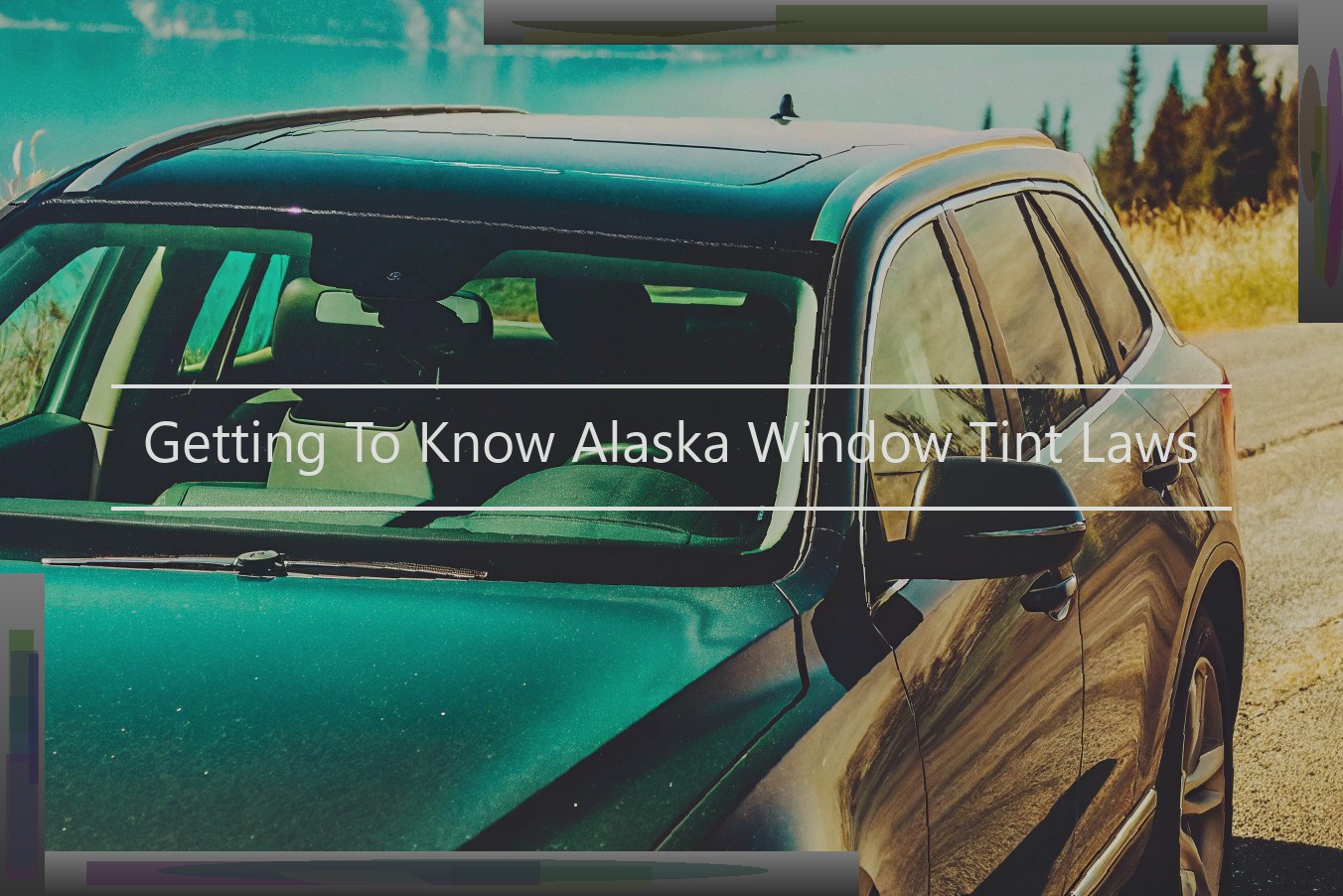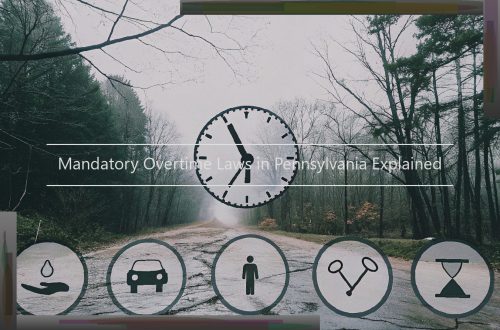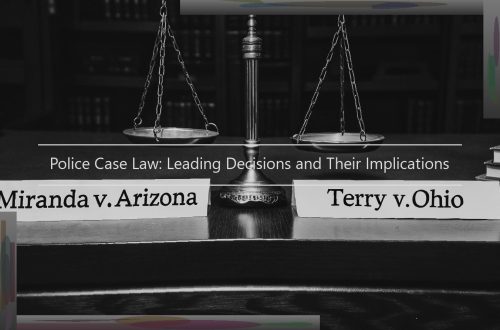Getting To Know Alaska Window Tint Laws
The Lowdown on Alaska Window Tint Law
Alaska’s window tint laws are governed by Alaska Statute § 28.35.241. In short, this section states that window tint must allow at least 70 percent or more of light in through the window to the driver and passenger windows. For rear windows, there is no requirement on how much light must be let in for general use vehicles. However, for buses, which are listed as common carriers for hire motor vehicles according to Alaska Statute § 19.10.310(5), there is a 75 percent rule as far as light transmission. In addition to the above requirements, any reflective tint or coating on the windows of a vehicle cannot have a reflectivity greater than 5 percent. Basically , no mirror-like tint is permitted in the Land of the Midnight Sun.
Because Alaska does not have a safety inspection program, local law enforcement may stop any vehicle that appears to have excessively dark tints and can issue a citation requiring that the tint be removed. If you are pulled over for excessive tinting, the officer will probably ask you to peel a corner of the tint back to see how dark the tint is or how hard it is to see out of the tinted window. All in all, not a difficult violation to avoid.
We highly recommend that you check with your local law enforcement before putting tint on your vehicle in order to avoid an unwanted traffic stop that could lead to further investigation if your tint is determined to be too dark or if you have a busted taillight as well.

How Dark Can My Window Tint Be in Alaska?
Alaska has specific rules about the darkness or lightness of window tint being added to a new windshield or tint being added to in an existing vehicle. Back in 2014, the law was updated to require that all windows be covered and marked to address the level of light that is allowed to filter through the window glass. The law requires that the driver and front passenger side windows must allow 70% of the light through. The law does not allow a vehicle owner to legally place window tint material on the front windshield. For back seat windows, there is no limit on the amount of tint, with each window able to be fully darkened. What is required by law is that after tinting is placed on vehicle windows, that they be marked with a sticker or tag on the tint to verify this information. These must be placed on the window and in the tint close to the top of the windshield and on every side window as well.
Penalties for Violating Alaska Window Tint Law
Certain exemptions exist, however, that may delay the imposition of fines upon repeat offenders. First-time offenders are typically subject to a fine of not less than $100 and potentially subject to up to $500 if the violation is classified as aggravated. Second offenses may incur increased fines which may be issued for every subsequent infraction up to a maximum fine of $1,000, unless otherwise stated to be a class A misdemeanor. Criminal conviction for window tint violations can result in a misdemeanor conviction with up to 30 days in jail, a $250 fine or both.
Various exemptions to this penalty scheme, however, may delay the imposition of the fines until the repeat offender has committed four window tint law related violations within the specified time period, in which case the fine increases for each offense. For five or more violations committed by an offender who has been cited at least four times, the district attorney will seek prosecution, making the charge a class A misdemeanor which is subject to a range of of 0 to 360 days in prison and/or a fine of $0 to $25,000.
Exempted Tints, Special Cases and Technical Information
Certain exemptions to the tinted window law will apply in special cases, although these circumstances are admittedly rare. Drivers who are partially or fully blind who need tinted windows as part of treatment are allowed to have special consideration. The People’s Law Firm explains that a doctor’s note may be required to obtain the tinted window, and this notice should be kept in the car at all times. However, manufacturer-tinted windows are the only kind that is permissible for the front windshield . Alaska law prohibits nearly all tinting on the front windshield, with an exception for the top five inches of the windshield that may be tinted, called a medical exemption. This is the only exemption to the tinted window law, so it does not help drivers who want comfort from the sun. Windows on a vehicle that are tinted or treated in any way that ‘irregularly affect visibility’ are not legal. Therefore, the law would apply if a driver puts curtains over the windows in the car.
How to Test for Legal Window Tint
Due to accumulating debris on the tint screen of your window, you may not always know whether your levels are in compliance with the law. Luckily, there are a couple of ways to determine whether your tint is in accordance with Alaska State law. First, there is a tint gauge that can be purchased at audio/video retail stores. This tint gauge will help you determine whether the tint on your windows passes or fails.
One promising option for determining whether your tint is legal is to go to a professional tint shop. Most tint shops will have the correct tools to accurately measure tint levels. Typically, these shops will not charge a fee in order to do this, as they will hope the customer will use them to retint their window if it is out of compliance. However, this is not guaranteed.
The final option for measuring your window tint is to contact your local Alaska Department of Motor Vehicles (DMV) office. If you bring your car and the tinted window to the DMV office, they will be able to measure the amount of visible light transmitted through your window screening, helping you determine whether your tint is too dark.
Tips For Choosing the Right Window Tint
Once you have determined that legal window tint will fit your needs, the next step is determining what type of tint will comply with Alaska law and also meet your personal standards.
The Alaska law is as follows:
AS 28.35.290 Window tinting and safety glazing material.
(a) A person may not operate in this state a passenger vehicle unless each window on the vehicle, except the windshield, is equipped with safety glazing and the safety glazing material meets the pertinent American National Standards Institute safety code for safety glazing materials for motor vehicles.
(b) An owner or operator of a passenger vehicle may not place or permit to be placed upon the windshield or any other window of the vehicle, except the top six inches of the windshield and the rear window of a bus, bus-commissioned vehicle, or taxi, safety glazing material or other material having a light transmission of less than 30 percent or reflecting more than 5 percent of the light in the direction of the sun’s rays. However, a limousine, sports utility vehicle, van, or window-van may be equipped with safety glazing material or other material having a light transmission of less than 30 percent and reflecting more than 5 percent of the light in the direction of the sun’s rays on windows to the immediate left and right of the driver.
(c) In this section a "passenger vehicle" means a passenger car, van, 4-wheel drive passenger car, window van, mini-van, pick-up truck, or multipurpose vehicle, designed to transport fewer than 10 persons. In this section
(1) "window-van" means a multipurpose vehicle or a van designed or used primarily for transporting cargo, with factory-installed windows on the sides, windshield, and rear window; and
(A) "window-van" does not include a hatchback model, sport-back model, or fast-back model automobiles or other automobiles with rear storage area models; and
(B) the windows to the immediate left and right of the driver on a window-van must have a light transmission of at least 32 percent and may have a light reflectance of no more than five percent. (emphasis added)
For example, if you own a pick-up truck, you can legally have up to 30% window tint on the windows to the sides of the driver . On the other hand, if you own a window-van, you can legally have up to 32% window tint on the front windows. And, if you own a passenger car, you can legally have up to 32% window tint on ALL windows (except the windshield).
It is important to keep these differences straight because some tint installers will try to say that you can have darker tint on all windows. Technically, if you have a pick-up truck with dark tint on the front passenger and driver side windows, you may be pulled over for that violation. However, even if you ARE pulled over for having darker tint than the law allows, the penalty is very light. First of all, it is a minor infraction. The penalty is a fine of $50. Secondly, if you are pulled over for this violation, you will NEVER get fined for possession of window tint – meaning that the police officer generally won’t make you go to court to contest the ticket.
It is a good idea to install the legal amount of tint on at least the front windows because that helps you avoid trouble from the police. However, the real reason you should comply with Alaska law is function and safety.
Window tint transmits heat. This transmittance – or absorption – of heat means that your tinted vehicle will stay cooler in the summer and hotter in the winter, saving you gas money when you run the air conditioner in the summer and the heater in the winter. Your windows will not bother you with the majority of UV light that cause skin cancer. You will see a BIG difference once you have legal tint installed on your vehicle windows since you will feel an enormous reduction of heat in your car at the end of the work day.
Stepping again out of my role as a lawyer, my personal choices for tint are 3M and Llumar. I feel these two brands are the best on the market today. For darkest tint that passes Alaska law, the darkest tint available in AS40 is the Lumar Air80 or the Llumar ATC 25. For tint that is darkest AND most effective at keeping your vehicle cool, which still passes Alaska law on passenger cars, the darkest tint – that passes Alaska law on passenger cars, is the Llumar ATR 5. If you drive a truck, another option is the Lumar ATC 20.



